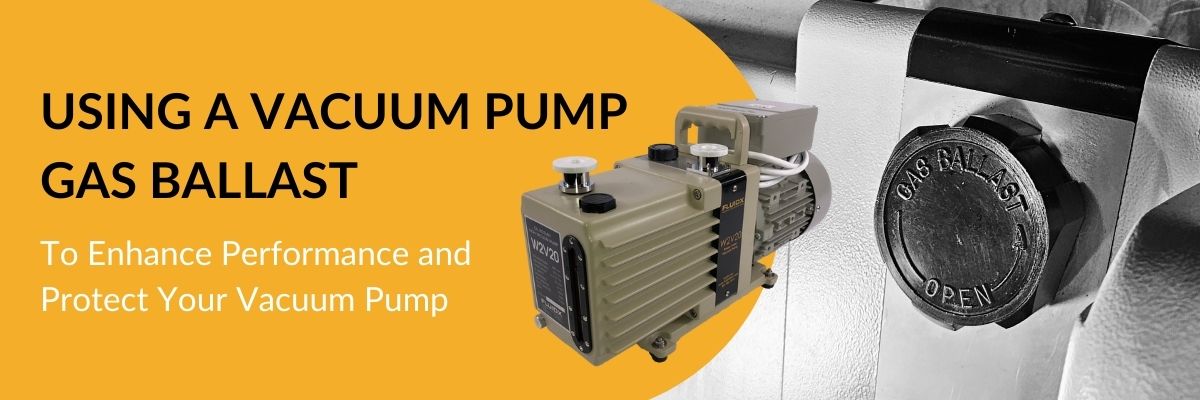
Vacuum pumps are essential tools in various industries, from laboratories to industrial processing. One critical feature that can significantly enhance their performance and longevity is the gas ballast.
What Is a Gas Ballast?
A gas ballast is an integrated valve in some vacuum pumps designed to introduce a controlled amount of air or inert gas (like nitrogen) into the pump during operation. This process helps minimize vapor condensation within the pump. In certain models, the gas ballast valve can be adjusted to introduce varying levels of air, allowing for tailored protection while maintaining the desired vacuum level.
Recommendations:
- Continuous Operation: In demanding applications with high vapor loads, it may be necessary to keep the gas ballast valve continuously open to prevent condensation.
- Intermittent Operation: For processes with occasional vapor presence, intermittently opening the gas ballast valve might suffice to prevent condensation.
Disclaimer: Operating a vacuum pump continuously with the gas ballast open can cause the pump to run hotter than normal due to the increased gas load.
Why Does It Matter?
Utilizing a gas ballast offers several benefits:
- Prevents Oil Contamination: By inhibiting vapor condensation, the gas ballast keeps moisture and solvents from contaminating the pump oil, preserving its quality and effectiveness.
- Reduces Maintenance: Cleaner oil leads to fewer maintenance requirements, extending the intervals between oil changes and servicing.
- Extends Pump Life: Preventing internal corrosion and wear due to contaminants enhances the overall lifespan of the vacuum pump.
- Improves Efficiency: A gas ballast can also help the vacuum pump be more efficient at pumping light gases such as helium.
When to Use a Gas Ballast
Incorporating a gas ballast is particularly beneficial in processes involving moisture or solvents, such as freeze-drying and vacuum distillation. It helps maintain efficiency in demanding applications and is recommended in environments where atmospheric air contains high levels of humidity.
Key Considerations
- Vacuum Level Impact: Opening the gas ballast can reduce the ultimate vacuum level achievable by the pump.
- Oil Maintenance: Using the gas ballast to remove condensation can help eliminate some condensed vapors in the oil, restoring the pump's peak performance and extending oil life.
- Proper Usage: For optimal results, consult the pump's user manual to ensure correct operation of the gas ballast feature.
Find the Right Vacuum Pump
FluidX offers a range of vacuum pumps equipped with gas ballast functionality, designed for optimal performance:
- FluidX W2V10 3.5 CFM Dual Stage Rotary Vane Vacuum Pump: This lightweight, quiet, and compact pump features an anti-suckback and gas ballast valve, quick disconnect ISO/KF fittings, and is ideal for various applications.
- FluidX W2V40 14 CFM Dual Stage Rotary Vane Vacuum Pump: Offering a higher pumping speed, this model also includes an anti-suckback and gas ballast valve, making it suitable for more demanding tasks.
- FluidX W2V80 28 CFM Dual Stage Rotary Vane Vacuum Pump: For applications requiring even greater capacity, this pump provides robust performance with the added benefits of gas ballast functionality.
To explore our full range of vacuum pumps and find the best fit for your needs, visit FluidX’s Vacuum Pumps page or contact us for expert guidance.
Enhance your vacuum pump's performance and longevity by effectively utilizing the gas ballast feature.
